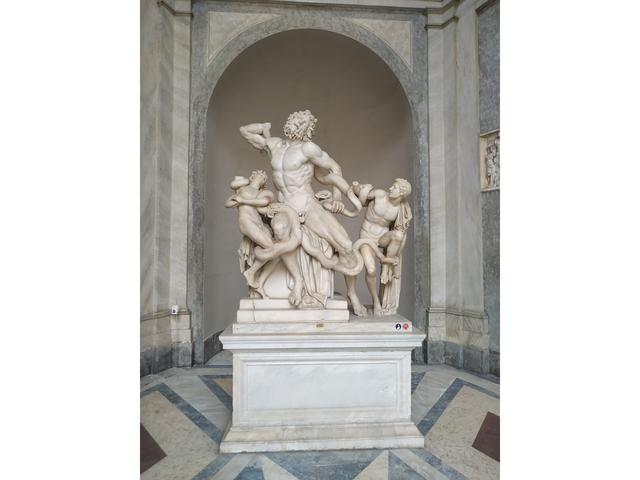Vatican Museums
Don't miss anything
Laocoön and His Sons
The sculptural group was discovered in 1506 in the Esquilino, in Rome, and immediately identified with the Laocoon described by Pliny as the masterpiece of the sculptors of Rhodes: Agesandro, Atenodoro and Polidoro. The exact date of construction is not known.
Laocoon is a character from the Trojan War. During this war, Laocoonte, a Trojan priest of the god Apollo, opposed the entry of the wooden horse into the walls of the city. Athena and Poseidon, favorable to the Greeks, sent from the sea two monstrous serpents that surrounded and asphyxiated Laocoon and her two sons.
When she was discovered she lacked the right arms of Laocoon and one of her children, and the right hand of the other son; some parts of the snakes were also missing. It was decided to restore the sculptural group and there was controversy about how it should have been the arm gesture that the father lacked. Miguel Ángel proposed to restore the father's arm in a position of flexion; the artist came to make this arm, but did not wear it and is currently exhibited along with the sculptural group.
The work is framed within a composition of a pyramidal figure, and the best position for its observation is the frontal one; the work represents human emotions in their maximum pathetic expression. It is of a more extreme drama.
The expression of guilt and the great drama of Laocoon, which makes contortions in painful agony, are shocking. Within the group, the two monstrous snakes, which curl up to kill according to the punishment imposed by the gods, are part of the visual composition of the group, and with their curved lines get the union between all the characters, a fact that helps to show the dynamic that emerges from the group. There is a will to exaggerate the theatrical effect of anatomy, and the moral pain of Laocoon is added when witnessing the death of his two sons.




